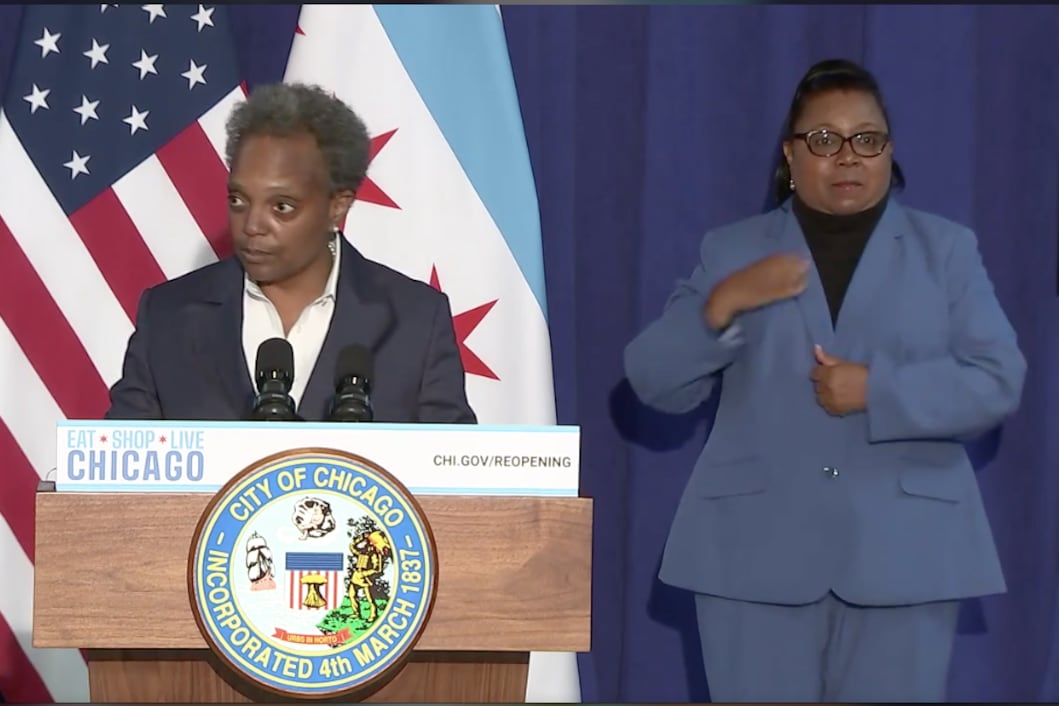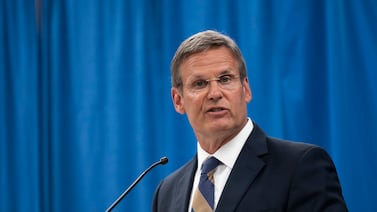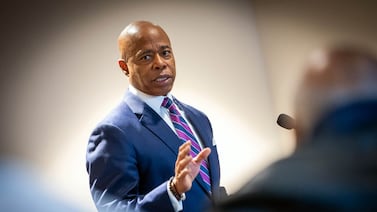Chicago will ease restrictions on restaurants, bars, and gyms later this week, Mayor Lori Lightfoot announced Monday, a move that effectively revises the city’s own rules about reopening during the pandemic.
The announcement raises questions about the tentative plan to return students to school buildings by Nov. 9, specifically what metrics the city will use to make the decision. But Lightfoot declined to address the issue in detail, calling it a “wait and see” moment.
“We’re not there yet,” she said during a press conference in response to a question about school reopening this fall.
City officials had previously said the city would only consider easing restrictions on bars and restaurants if daily average case rates were below 200. But today the city is closer to a daily average of 300 new cases. Despite that, Lightfoot said city officials feel “confident enough in the numbers.”
Starting Thursday, gyms and restaurants can increase capacity and bars that don’t serve food can offer indoor service. During the press conference, speakers talked about the economic necessity of expanding access to those businesses.
On schools, however, the mayor struck a different tone, offering little information on what standards will need to be met to reopen schools in November or when families should expect to hear about next steps. The school district also has been quiet about plans.
Right now, Lightfoot said, the city’s challenge is to get all students online, but Chicago has to “see more progress” to have a conversation about reopening school buildings.
When will the city start releasing information about a second quarter reopening framework for schools? “Soon,” the mayor said.
The city previously said that it would pursue a hybrid learning plan as long as the number of new daily cases stayed below 400 a day without other concerning factors, such as an increase in hospitalizations. Fewer than 100 cases a day for four consecutive weeks could trigger a full-time return to school, the district said in July.
But an uptick of cases soon after forced a pivot to an all-virtual start to the year. When the district announced a fully remote plan in early August, Chicago was counting a daily average of new cases closer to the 400 mark. The district also cited survey results showing few Black and Latino parents were willing to send their children to school.
The teachers union had also been critical of the plan for hybrid learning, and it raised the possibility of a strike over the earlier back-to-school plan.
On Monday, the Chicago Teachers Union shared a letter asking the district to clarify what the new metrics for reopening would be and whether the district would invest in improved ventilation in its school buildings.
“We share CPS’s concern about maintaining student enrollment,” the union’s letter, signed by president Jesse Sharkey and vice president Stacy Davis Gates, said. “But a return to in-person learning before it can be done safely, along with timing that will coincide with a potential fall surge in COVID-19 infections currently predicted by public health experts, could be catastrophic for Chicago.”
The union said the city’s overall positivity rate of 4.3% did not reflect higher case counts in some Black and Latino communities.
At Monday’s press conference, speakers spoke about the economic necessity of easing restrictions on bars, restaurants and gyms. They also said that there were mental health benefits for people who are able to exercise.
“Exercise fights many of the comorbidities associated with severe COVID cases, and reduces depression and anxiety in a year that has taken a major toll on mental health,” said Abby Phelps, a pilates studio owner and board member of the Illinois Fitness Association.
Mental health concerns aren’t far from the minds of families with students in Chicago Public Schools.
Several weeks into remote learning, concern from parents upset with the demands of online learning, particularly parents whose children have special needs, has fueled new questions about when schools could reopen.
“I can’t leave my daughter. I don’t even know how I’m going to go to work but I need to go back,” said one parent of a special education student.








